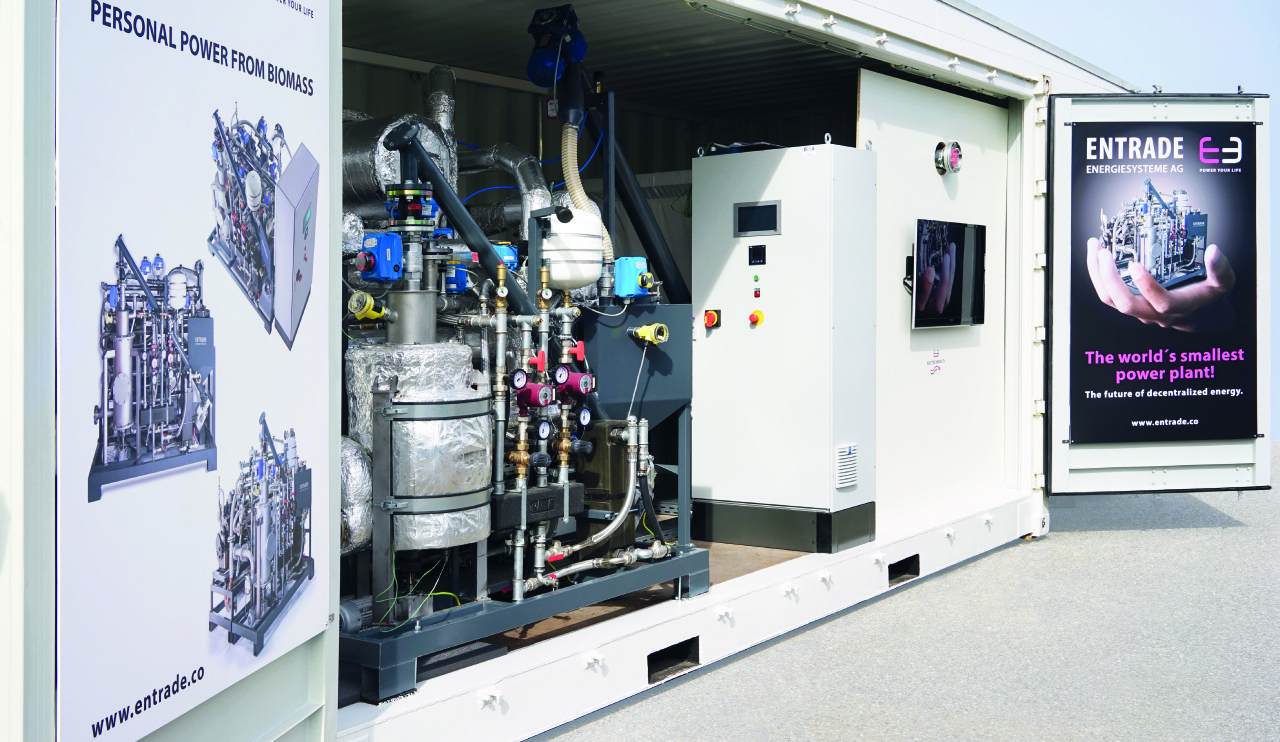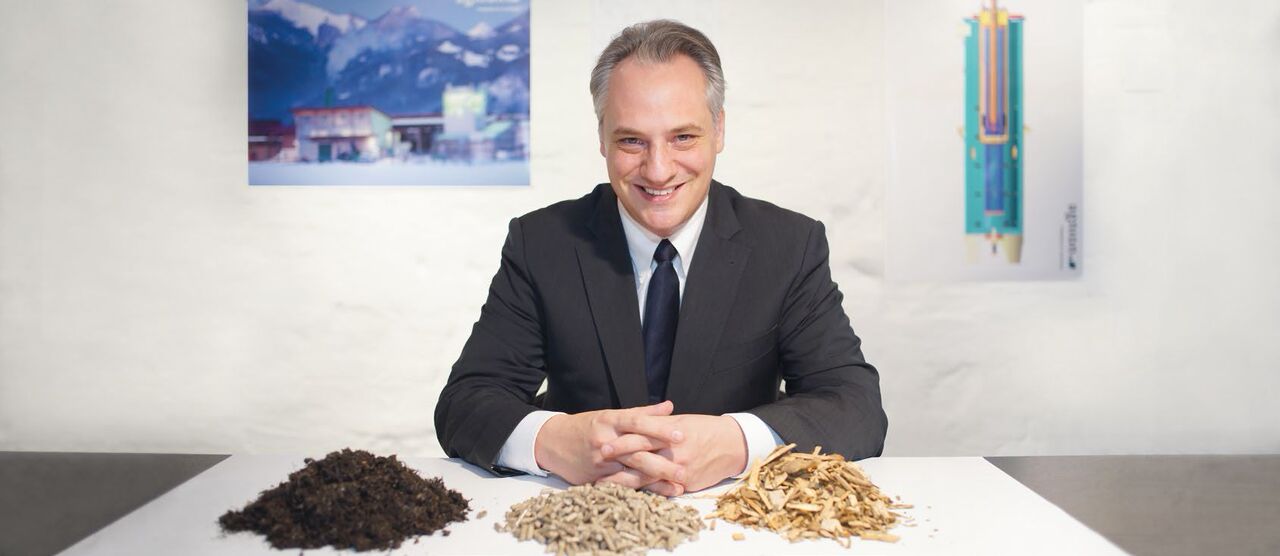Biomass Waste is a Problem - and a Resource
Biomass, especially the waste from forestry and agriculture, industry or households, is a clean and cheap energy source. However, biomass power plants are usually expensive, industrial-style, and not applicable for decentralized usage. Therefore, in 2009, a group of German engineers began to develop a small-sized, medium-output combined heat and power plant. Their main goal was to bring electricity, heat, and cooling to even the most remote corners of the earth. They wanted to provide clean energy from waste, where diesel generators are typically used, and help those who still have no access to affordable energy.
The mountain of waste arising daily in forestry, agriculture, and downstream industries is gigantic. Furthermore, there is food waste and other garbage from service industries and private households. In the US alone, this waste fills more than 3,500 landfills per year. This is as much as 220 million tons of waste, even though plant remains are far too valuable to simply throw away.
Thermally recycled in a biomass power plant, the waste delivers electricity and heat without charging additional carbon dioxide into the atmosphere. Some may argue the combustion of such biomass also produces CO2, which is true, but only in the same amount it was captured from the atmosphere during plant growth. This represents a clear advantage over fossil fuels, which release longtime stored carbon.
Transform straw into gold
Along with classical steam power plants and OCR systems, biomass gasification plants are a third possibility. The principle behind biomass gasification technology is far from being http://new. Solid biomass, e.g. wood waste pressed into pellet form, is thermally decomposed at very high temperatures. The escaping syngas is used as fuel in an ordinary gas engine which powers a generator and produces electricity.
 Such plants operate on the principle of cogeneration. This means, the generated heat is also used for cooling if it is combined with an adsorption chiller. Biomass power plants are capable of generating base load power, making them ideal renewable energy partners for solar power plants and wind farms. However, the expensive classical steam power plants are often only practical for industrial users and utility-scale power grids.
Such plants operate on the principle of cogeneration. This means, the generated heat is also used for cooling if it is combined with an adsorption chiller. Biomass power plants are capable of generating base load power, making them ideal renewable energy partners for solar power plants and wind farms. However, the expensive classical steam power plants are often only practical for industrial users and utility-scale power grids.
For the decentralized energy supply, the technical effort required and the size of these plants can become a problem. A new solution is a high temperature reactor, combined with a gas engine and a generator, placed on three square meters, arguably the smallest biomass power plant in the world. One unit supplies 25kW electric and 60kW thermal power. In combination with an adsorption chiller, the heat can be transformed into 30kW cooling power. To increase electric and thermal output, several biomass power plants can be coupled.
A seemingly insurmountable hurdle to overcome is the substance created while using biomass, tar, and the problems it causes on the engine. Tar is a highly viscous mixture of different organic compounds released during thermal digestion, and is deposited in the engine. The wear is high and frequent maintenance is the only solution. With this new system, however, the power generator can be operated with many different fuel mixtures, and even without additional filtration, the amount of tar residues is less than 0.1 grams per standard cubic meter.
Another important point is the range of usable fuels. Ideally, these should be decomposable, and locally available. In addition, they should not enter into competition for land with food plants. Waste is therefore the ideal solution. A science team at the Technical University of Graz (Austria) is doing ongoing research, identifying new opportunities to convert by-products, agriculture waste, and specific household waste components into a sustainable fuel mixture. At the laboratory, they test various starting materials, verify the tar content, the syngas composition, and the emission values. In the end, many other fuel mixtures will be certified.
Whether its a pellet facility in California, a farm in the Argentine pampas, or a village in the heart of Africa, the demands on power supply are similar. If it can be easily transported to the operation site, simply installed, economically operated, and conveniently maintained, a power plant meets the essential characteristics to be used far away from central electricity grids.
 Julien Uhlig is the CEO of ENTRADE Energiesysteme AG, a German cleantech company. ENTRADE is a portfolio company of the LA Cleantech Incubator and one E3 unit in the front of the LA Kretz Innovation Campus is powering the building with electricity and cooling.
Julien Uhlig is the CEO of ENTRADE Energiesysteme AG, a German cleantech company. ENTRADE is a portfolio company of the LA Cleantech Incubator and one E3 unit in the front of the LA Kretz Innovation Campus is powering the building with electricity and cooling.
ENTRADE Energiesysteme AG | www.entrade.co
Volume: 2016 March/April










